For something that sounds more like an exotic herbal remedy than a plant for your home, Selaginella is perhaps one of the biggest family of plants you’ve never heard of – or at the very least, fully understood.
Which is not a surprise really, considering Selaginella has been having an ongoing identity crisis for a long while now. With the characteristics (and often names) of mosses and ferns, this genus has landed squarely in the “not sure where to place this” category.
Honestly, it’s such a shame. Many of the 750-strong Selaginella species have the makings of fantastic terrarium plants (and houseplants to a lesser extent).
In this article, we’ll be clearing up all the confusion around Selaginella, recommending the best Selaginella varieties for your homes and projects, and helping you take care of them.

Terrarium Tribe is reader-supported. When you purchase through links on our site, we may earn an affiliate commission (at no further cost to you). 💜
Selaginella Characteristics and Classification
Honestly, the classification of Selaginella is a bit of a jumble.
It’s not a moss, yet its common family names are “Spikemoss” and “Clubmoss”… It’s not a fern, and yet many of its varieties are labeled as such… Which is unhelpful, to say the least.
The truth is that it carries characteristics of both, but it’s from a distinct and ancient lineage of vascular plants in the Selaginellaceae family.
Selaginella plants are really only unique to themselves, which is why people have a hard time communicating what they are properly. I guess it’s easier to name (and sell) things that people can identify with.
Though they vary considerably in size and shape, they do tend to have some consistent qualities.
Common Selaginella characteristics include:
- Either a creeping, mat-forming growth (like a moss) or an upright branching growth (like a fern).
- Small, scaly leaves on branching stems.
- Spore-producing leaves.
Top Selaginella Varieties
What makes Selaginella such a great family of terrarium plants is an almost universal love of moisture and humidity. Though the genus is found in both tropical and temperature regions, the vast majority are going to love closed terrarium life.
On the flip side, there are some Selaginella species/cultivars that can grow comfortably in the home, but that list is much smaller. Most species are going to need significant humidity to thrive, so pebble trays can really help to keep that up.
Overall, despite the hundreds of reported Selaginella varieties – in terms of what’s actually available to find/buy online – there’s only really a handful of species to note.
#1: Selaginella kraussiana (Golden Clubmoss, Spikemoss)
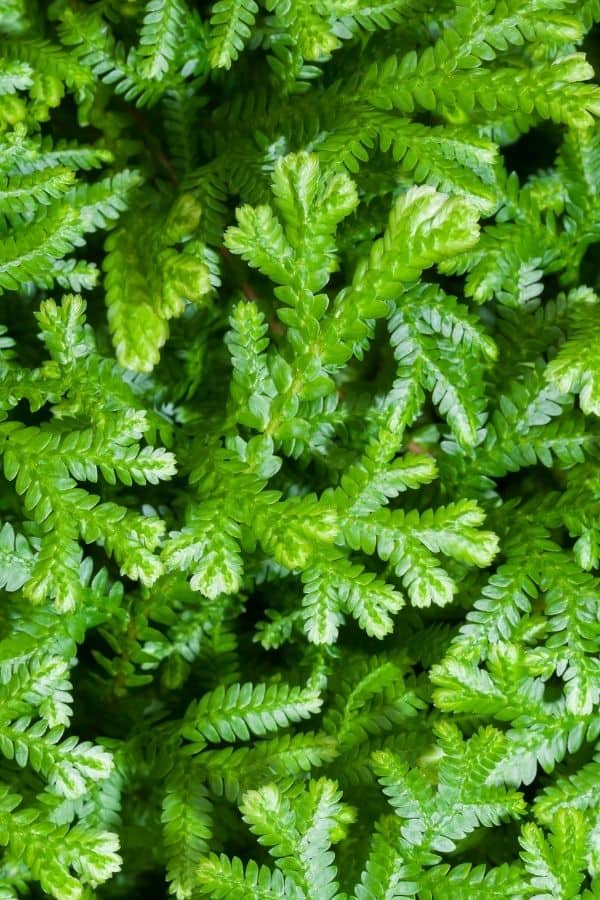
Selaginella kraussiana is the most well-known species in the family, and it has a great standing in the terrarium community.
Loved for its easy growth and lush mossy appearance, it has become a staple ground-cover choice in tropical terrariums. Its growth pattern can be unpredictable, but it’s great for adding that “wild” element to a terrarium.
It’s also one of the species that functions as a houseplant, provided you can keep up with its watering…
👉 Shop Selaginella kraussiana on Etsy.
#2: Selaginella uncinata (Peacock Spikemoss/Peacock Fern)
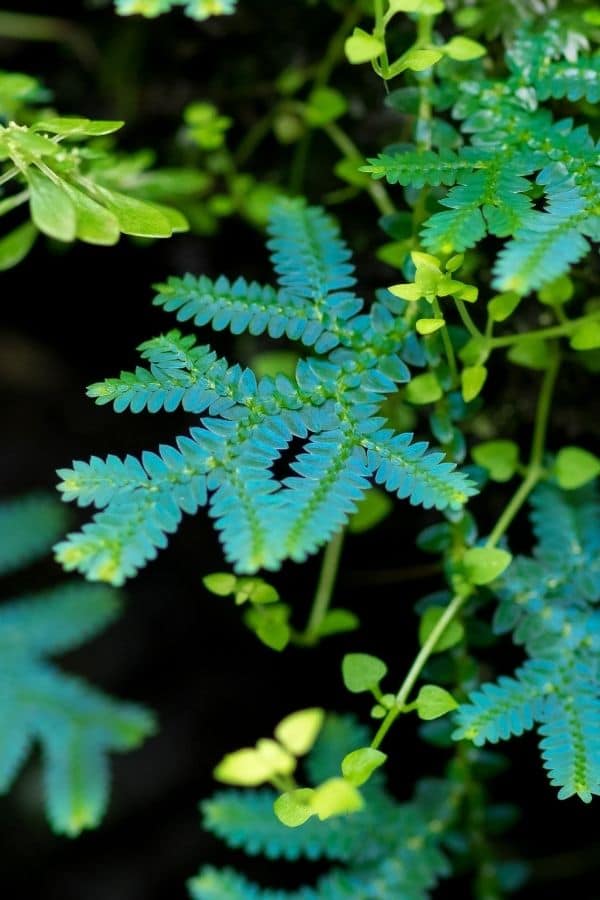
It’s clear why this iridescent stunner of a plant goes by the name of Peacock Spikemoss.
Coming in a wide variety of blues, purples, and greens, this gorgeous plant has more of a vining nature than the others, but it will still form a pretty dense mat as it weaves around.
I have seen this grown in pots, but it definitely appreciates the extra humidity of a terrarium.
👉 Shop Selaginella uncinata on Etsy.
#3: Selaginella martensii (Martens’s Spike Moss)
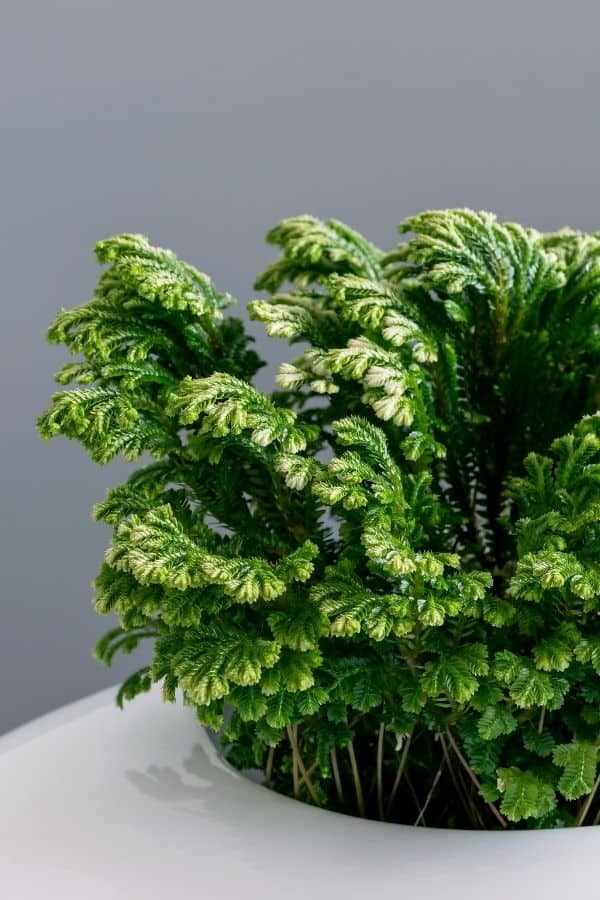
One of the true low-light terrarium plants, Selaginella martensii tends to grow in a more controlled fashion. Growing upright with broad overlapping leaves, it’s one that resembles a fern much more than a moss.
It’s well known for its ‘Jori‘ variety, which is also often called ‘Frosty’ for its characteristic white tips.
Though, despite its festive looks, it’s very much a tropical species.
👉 Shop Selaginella martensii on Etsy.
#4: Selaginella emmeliana
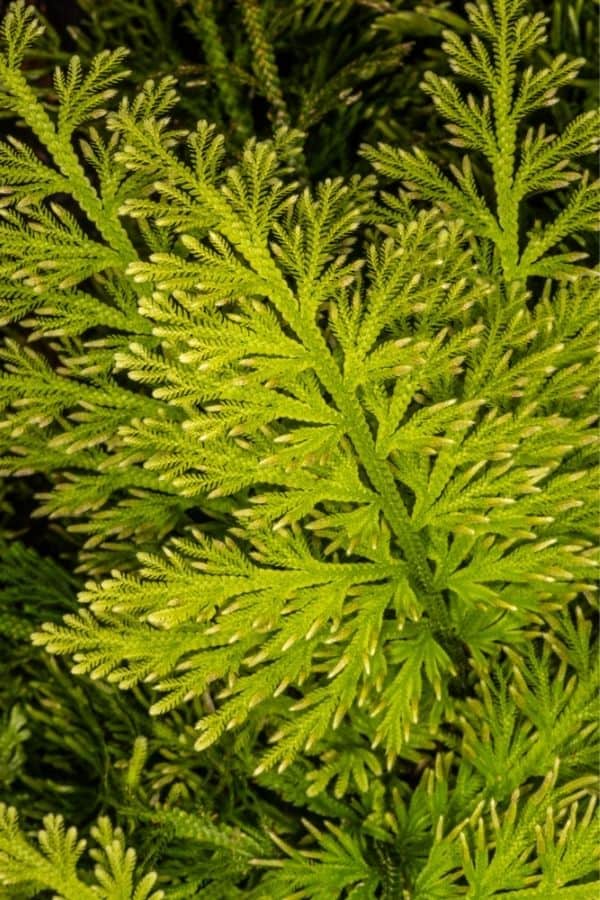
Similar to S. martensii, Selaginella emmeliana has a more feather-like shape to its growth and exhibits a little more separation between branches.
It’s great for areas of a terrarium that are begging for a compact fern but can’t really fit one.
👉 Shop Selaginella emmeliana on Etsy.
#5: Selaginella braunii (Braun’s Arborvitae Fern)
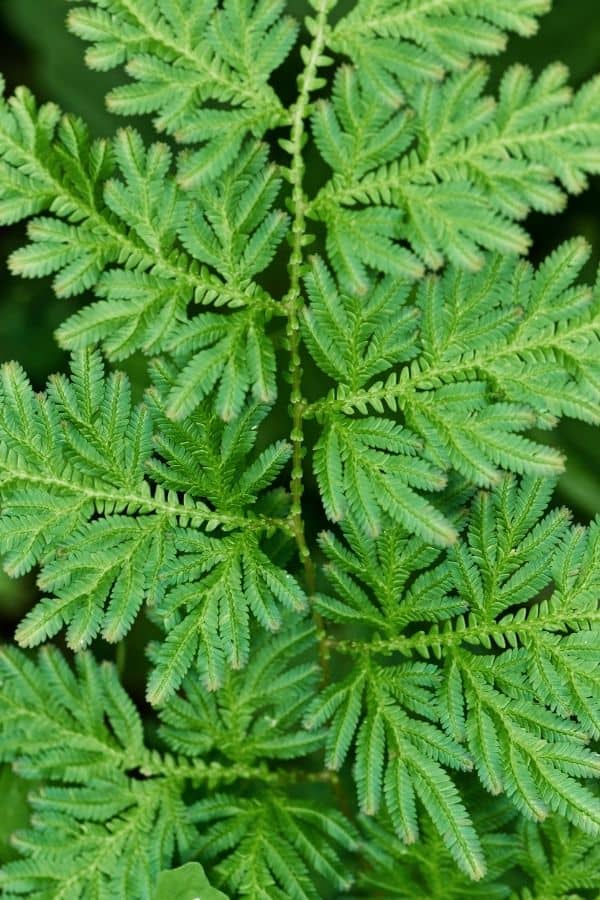
To me, Selaginella braunii has the most classic fern feeling.
Where many Selaginella species will only grow an inch or two high, braunii can actually grow quite large. Definitely one for larger terrariums.
Personally, I think it looks like a miniature Rabbit’s Foot Fern with its arrow-shaped “fronds.”
👉 Shop Selaginella braunii on Etsy.
#Bonus: Selaginella lepidophylla (The Resurrection Plant)
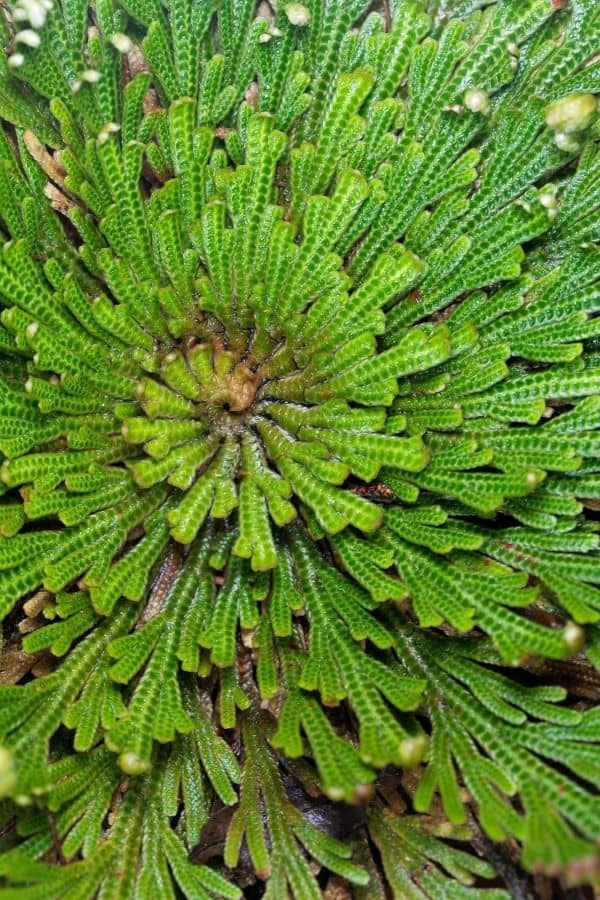
This one is not like the others. If you want a Selaginella that’s definitely able to survive without humidity – this is it.
Famously known as “The Resurrection Plant”, this species of Selaginella is a desert-dwelling plant that’s able to go without water for incredible amounts of time.
It’ll literally dry up into a ball of fiber, which can be miraculously “resurrected” once it’s watered.
👉 Shop Selaginella lepidophylla on Etsy.
Other Noteworthy Varieties
These Selaginella are available online but are generally rarer and more difficult to source.
- Selaginella plana
- Selaginella apoda
- Selaginella willdenowii
- Selaginella picta
- Selaginella mollis
- Selaginella erythropus
- Selaginella peruviana
- Selaginella serpens
- Selaginella pallescens
- Selaginella griffithii
Selaginella Care
Light
As expected from a family of plants found on forest floors, Selaginella are known for their great low light tolerance.
In fact, they do best in areas of indirect light, as harsh direct light can quickly dry them out. So they’ll do great paired with most other tropical terrarium species.
Watering and Humidity
Other than the crazy exception that is “The Resurrection Plant”, Selaginella on a whole needs consistently high moisture and humidity.
Honestly, the fastest way to kill a Selaginella plant is to let it dry out. Which is why closed terrarium conditions are the best solution.
Substrate
Despite being a moisture-loving genus of plants, that doesn’t mean Selaginella are going to be happy sitting in water.
Much like ferns, they’ll do best in a substrate that can retain lots of moisture but also has good drainage. See our terrarium substrate guide for more tips, or check out our signature substrate mix.
Propagation
Despite sitting somewhere between a fern and moss, Selaginella tends to favor the fern’s touch when it comes to propagation.
You can propagate Selaginella either through division (separating a healthy plant at the roots into multiple individuals) or they also propagate from rooted stem cuttings.
Technically, they are a spore-producing plant, too (much like a fern), but spore propagation is a needlessly challenging process when cuttings are a viable option.
Over to You
Are you going to be picking up a Selaginella for your next project or home? Or is there a variety that I’ve missed that people need to know about?
Let us know in the comments.

I’m sure you are tuned into the specific needs of plants for terrariums, but I’ve discovered that most common Selaginellas are happy to break the rules. I’ve found S. kraussiana will often grow from spores in soil where the plant once grew, sometimes up to a year later. Some are also fine after being exposed to frost. My favorite variety now is one I found in a pot that a Vermont nursery had stored in a shed all winter. It’s a very small form which doesn’t seem to get more than 1/2 inch off the ground. I haven’t been able to identify it or guess where it came from. Altogether, this is one of my favorite group of plants.
Thanks Brian, that’s super interesting. Selaginella really is a diverse and resilient group of plants.